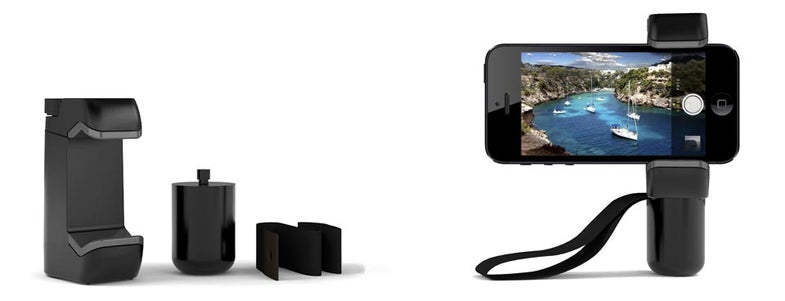New Gear: The Shoulderpod is a 3-in-1 Grip, Tripod Mount, and Stand For Any Smartphone
Any smartphone, any which way

We may earn revenue from the products available on this page and participate in affiliate programs. Learn more ›
The Shoulderpod S1 is a new smartphone grip out of Europe that will not only let you mount your phone on a tripod, but will also work as a stand and video grip, and thanks to its adjustable rubber grips, will work with almost any smartphone, even while in a case.
The shoulderpod is comprised of three basic parts. The main section is a mount/stand. It uses an adjustable screw to shift from 48-93mm (1.9-3.6 inches), which is enough variance to fit just about any smartphone on the market. Since it’s not locked to a single form factor, you can also position it at any point on the smartphone’s body. In this configuration, it has a 1/4-20 tripod mount, and can be used as a smartphone stand.
But the Shoulderpod gets an extra functionality boost by letting you screw a wrist-strap and extended grip into place, making it suitable for hand-held photography and videography. The folks behind the Shoulderpod are also planning to expand the S1 in the near future with further extensions and modifications that will likewise slot into the tripod mount.
So if you’ve ever considered using your smartphone for some more advanced shooting, something like the Shoulderpod S1 might be the way to go about it.
With a usual price of $35, the Shoulderpod S1 is having a launch sale for $30.